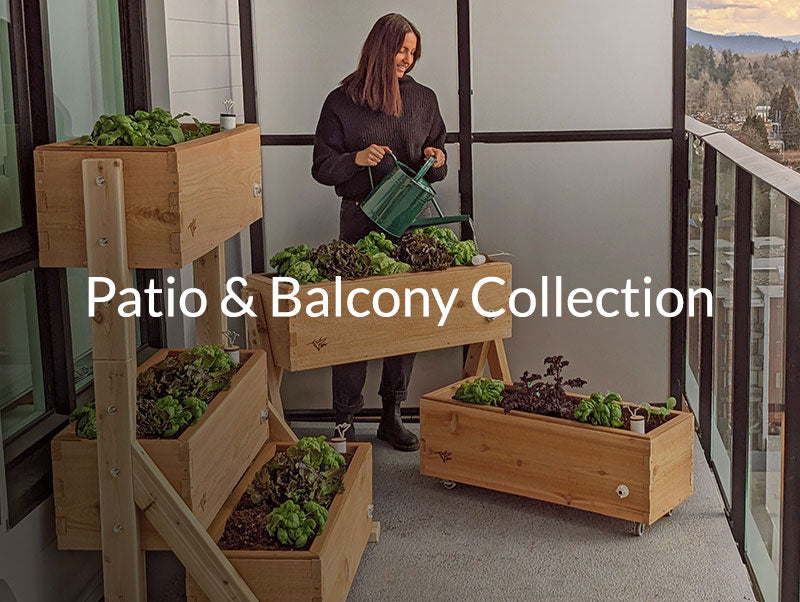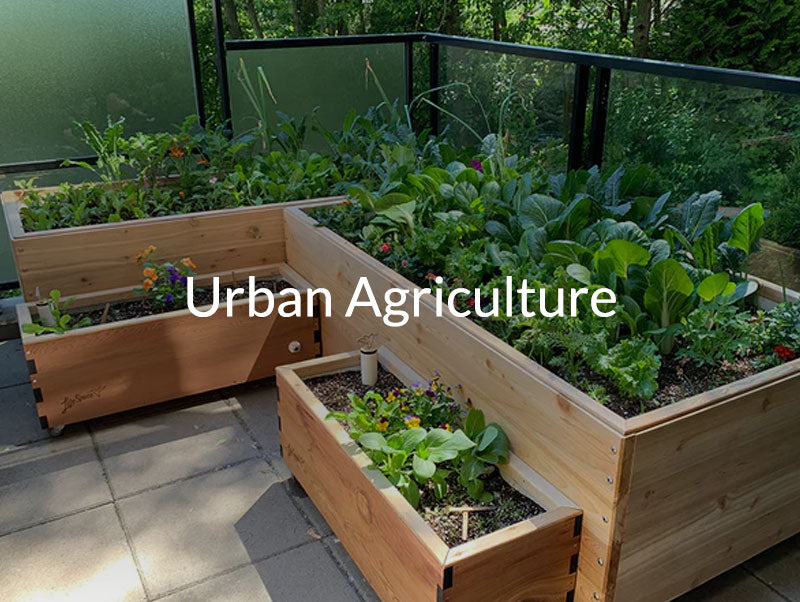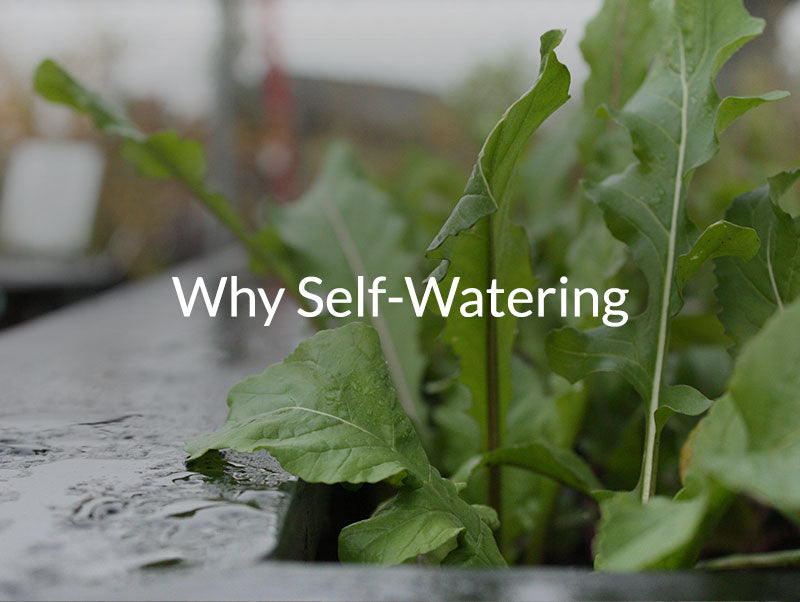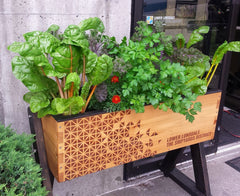Growing The Right Garden for You: Sun, Size and the Ideal Location.

Choosing the right location is one of the most important steps in cultivating a successful veggie garden.
If you live in a condo or townhouse, your choices are often limited - you've got your balcony, and it's time to make the best of it! (Check out our CondoFarms!) But... if you have a yard or a larger area to grow, it's worth taking the time to identify the best space. In any case, you need to know your environment in order to get the best results.
Sun Exposure
(Image: Artifex Garden Successful growing in Partial Sun 6-8hrs - even peppers had success here!)
When assessing your space, consider the amount of sun and shade it receives. You want to imagine the arc of the sun during the growing months, and identify any objects that get in the way of those precious golden beams. Trees, houses, and other buildings are the common impediments. South and South/West facing locations receive the most Sun, and often present the ideal locations. With that being said, this app is quite useful, and I use it personally all the time - Sun Seeker - Android / Apple. A low tech solution is to just monitor your location throughout the day and to make note of when the sun appears and disappears.
Full Sun 8hr+
In a perfect world, everyone has a space with at least 8hrs of direct sun exposure to grow their favourite veggies. This amount of sun will satisfy even the most demanding sun loving crops such as Tomatoes, Peppers, Eggplants and Cucumbers. In Full sun you can grow almost any veggie...
... except in the heat of Summertime, when without some shade, most of the leafy greens such as lettuce, spinach and arugula will bolt from too much heat.
Partial Sun 6-8hrs
Partial Sun can also make some great growing conditions. Kale, Swiss Chard, and various other leafy greens will thrive in an environment like this.
Also, often in Urban environments - because of surroundings buildings - a garden can be in Partial Sun during Spring, go into Full Sun as the height of the Sun rises in the sky, and then back into Partial Sun in Autumn. So don't be afraid to try some of the Sun loving veggies even if sun exposure doesn't seem ideal. The yield may be limited, but I've seen tomatoes grow in some pretty dark places!
Bright Shade 4-6hrs
Often this location is East, North East, or North West Facing. Sun appears in the morning or evening for just a brief period of time. Leafy greens and many herbs can do well in this environment. We've even had luck some surprising luck with some smaller cherry Tomatoes...
The main thing to consider is, just how dark is it when the sun isn't making direct contact? Is the light filtered through a tree? Is the sun reflecting off a neighbouring building? Often your location can receive more sun than you think, and I always suggest being a little ambitious when growing in a new spot.
Full Shade
If you want to grow herbs or veggies, it's time to get a grow light. Not too much grows in full shade without a little help... but it can be done!
Convenience
(Image: CondoFarms self-watering gardens growing fresh basil and other leafy greens conveniently on Condo Balcony)
This element cannot be understated.
For first time gardeners especially, you want to make sure that your Garden becomes part of your routine. If you have an unused location that you already walk past everyday, chances are it's an ideal spot for your veggie plot.
Why? Because a garden needs love, and a healthy garden is always producing.
One of the most surprising challenges LifeSpace Gardeners face, is missing out on harvests. Sounds crazy right? The problem arises from how easy the Self-Watering function makes garden maintenance. "Fill it and Forget it" is very nice to do before a vacation or Summertime long weekend - but if you do it for a couple of weeks on end, as it's easy to do, you can really miss out! Lettuce and spinach can bolt, tomatoes can drop to the ground, zucchinis can go from perfectly succulent to bigger and harder than a baseball bat in the blink of an eye.
So find a spot where your garden can really become part of your LifeStyle, you'll never miss out on a harvest, and you'll receive all the energy that a thriving garden provides to your diet, environment and well being.
Size
 (Image: Heirloom self-watering gardens growing fresh veggies on downtown rooftop)
(Image: Heirloom self-watering gardens growing fresh veggies on downtown rooftop)
This is one of the most common questions, "how big should my garden be?" Most people and other experts say start small and work your way up. That's good advice - you won't get overwhelmed, and your garden can expand as your gardening experience grows. But on the other hand... you got this! Grow in the space you have, and for the people in your life. One garden box per family member is a great way to get started, and a great way to encourage ownership and responsibility, as well as teamwork and sharing.
Ideal Garden Sizes
While it's true that you can build a garden any shape or size, we've found that generally speaking, not all sizes are created equal. Over the years there are certain shapes that we build more often, and if you're just getting started or in the planning stage, these sizes may be worth considering.
LifeSpace Suggestions
Success is really important, it's addictive, and it's easy to achieve if you take the right steps. Make sure you're growing things you love to eat, in a location you love to spend time in. We always encourage people to incorporate their gardens into their decks and patios, or to build seating areas into their growing space. It's worth spending a little bit extra at the beginning to make your garden aesthetically beautiful and ergonomic as well as functional - a place that you really want to spend time in. Beautiful things happen in the garden, even if it's just a small balcony, and it's important that you're there to make the connection and soak it all in.
Get outside, get together, and get growing!
Need more Help? Book an in person Consultation with a LifeSpace Expert
Want to build your own Self-Watering Garden or Raised Wicking Bed? Click here












